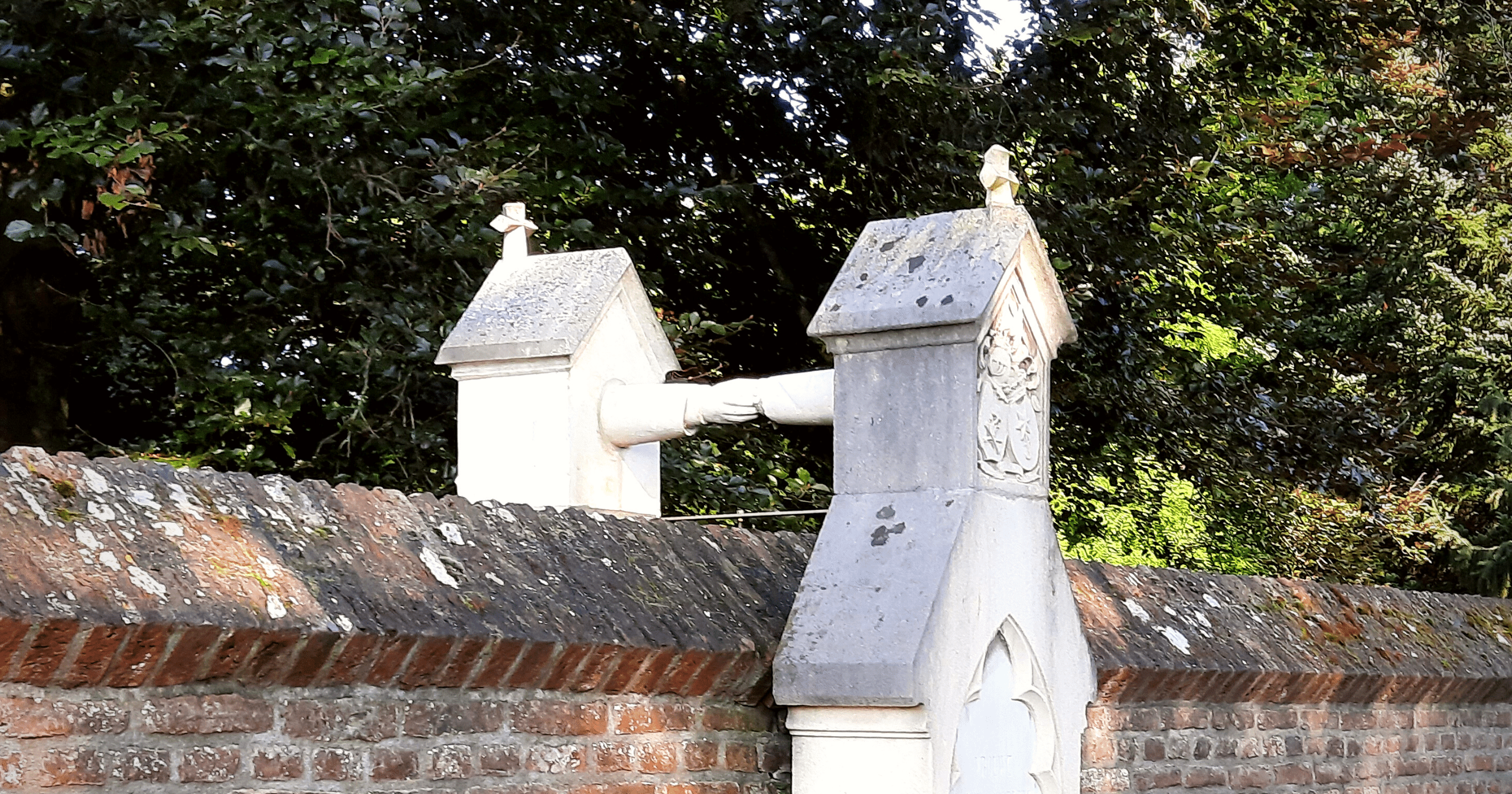Nearly 200 years ago, Catholics marrying Protestants was considered controversial.
Especially in the Netherlands, religious segregation called “pillarisation” kept Catholics and Protestants living in effectively separate societies.
That segregation led to the graves similar of Catholic J.C.P.H van Aefferden and Protestant J.W.C van Gorcum you see here.
Read their incredible story of true love below!
“JWC van Gorkum, a colonel in the Dutch cavalry, married JCPH van Aefferden in 1842. Despite their religious differences – van Gorkum being Protestant and van Aefferden Catholic – the two remained married until van Gorkum’s death in 1880. At the time, Dutch society followed a policy of “pillarisation” in which each religious community had its own schools, media, and cemeteries. As a result, van Gorkum was buried in the Protestant section of a cemetery near the town of Roermond.
Eight years later, when van Aefferden passed away, she was not allowed to be buried with her husband due to the strict segregation policies in place. However, she had made it clear that she did not want to be buried in her family tomb and instead wished to be as close to van Gorkum as possible. As a result, her grave was placed as close to her husband’s as possible, with a wall separating the two tombs. The grave features two tombstones with a pair of hands reaching out to each other over the brick wall, symbolizing the couple’s eternal love despite the societal barriers that separated them.”
Despite the challenges they faced, van Gorkum and van Aefferden remained devoted to each other and were often seen holding hands in public, regardless of the disapproving glances of those around them.
Van Gorkum’s military career suffered as a result of his marriage, and he was passed over for promotions and reassigned to less prestigious posts. However, he remained loyal to the Dutch army and served with distinction until his death.
Some believe after van Aefferden’s death, her family attempted to have her body exhumed and re-buried in the Catholic section of the cemetery. However, the local authorities refused to allow it, citing van Aefferden’s own wishes and the fact that the grave site had become a historical landmark.
In recent years, the grave site has become a popular tourist attraction and a symbol of love and unity in the face of religious and cultural divisions.
Many visitors leave flowers and notes at the graves, expressing their admiration for the couple’s enduring devotion.
Photo credit: memolands.com gallery via Flickr














